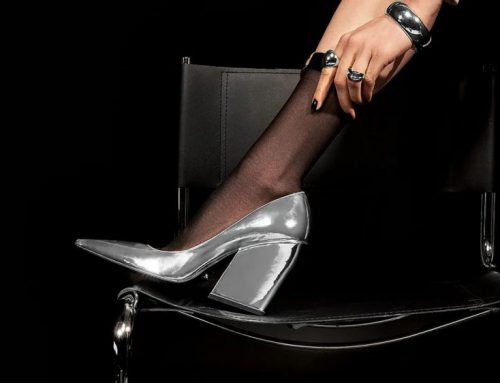Source: Mr. X via http://www.crazydaysandnights.net
The songstress/actress who spent much of her career overseas because she was more accepted had a great hook when she married the guy who was a fake Count.
He was really her “broker.”
Josephine Baker
Jean Lion
10 (little) Things You Might Not Know About Joséphine Baker
Josephine Baker was the most Parisian American, the most sultry music hall dancer and the most sardonic of icons.
She was the first black woman to become a star in Europe and was a symbol of the liberated Roaring Twenties. Baker performed so much that it is sometimes hard to grasp the true complexity of her character. Some can only picture a wild dancer, with a belt of bananas around her hips. Others remember the resistant, who was a spy for the French, or the 1960s civil rights activist…
Cinderella of the Folie Bergère
Josephine Baker’s younger years read like a modern, American version of Cinderella. Born in 1906 in St. Louis, Missouri, she grew up in poverty, and received little love or affection from her mother Carrie, working before and after school to provide for her family.
Even as a child, she loved to dance and amuse an audience. But who could have imagined that at only 20 years old, she would be the darling of the Folies Bergère, and dressed by the greatest couturiers of Paris?
But there’s no room for a fairy godmother in Josephine Baker’s story; she made her own luck. Josephine was an eternal optimist, she took her fate into her own hands and eventually managed to be hired as a dressmaker for the Dixie Steppers, before joining the team of Shuffle Along, the first Broadway musical performed by a black cast.
A MaskWhen Josephine Baker crossed the Atlantic in 1925, she was not a complete unknown. She had already danced on Broadway, where she was known for her expressions.
This was her ultimate weapon throughout her career: she would squint and contort her face. It was a weapon because it had a great effect on the audience, but also because it acted as a valuable facade for Baker, herself; it was a form of defence.
This clowning allowed Josephine to hide her fear, her anxieties and her complexes. As a little girl she was told that she was not beautiful. And when she began her career as a dancer, in the United States, she was considered too small and thin.
The Incarnation of a Colonial Fantasy
Josephine Baker expressed herself through dance. She was a sensation in the famous Revue Nègre (1925), in Paris, as critics and audience members were fascinated by her body and the energetic, crazy, almost possessed way she moved.
In the final dance of the show, she appeared topless, with a collar of feathers around her neck. This costume was a direct response to the fantasy French society had about the peoples and traditions of Africa: wild, primitive, but dominated countries. Josephine did not however come from the colonies, but from New York, and the steps she danced came from the most fashionable American dances of the moment, like the Charleston.
A Life Well-Lived
In 1926, the Revue Nègre troupe returned to Paris, after a triumphant European tour. Josephine then joined the Folies Bergère where she would become a great star.
Here she is on the stage, wearing her famous banana costume. She was a huge success and even influenced Parisian fashion: women wanted a tanned complexion and flattened their hair to their skull, with ‘Bakerfix’.
She was barely 20 years old when the journalist and writer Marcel Sauvage asked her to write her memoirs… Though she had only just left her teens, she had already experienced enough for a lifetime, from the poverty of East Saint Louis to her rebirth as a sex symbol of the Roaring Twenties.
Fervent CriticismRobert de Flers, a member of the French Academy and an influential critic for Figaro, wrote that the Revue Nègre was “lamentable transatlantic exhibitionism that takes us to the depths of depravity”.
This violent, racist criticism, was just the beginning of the verbal violence Josephine was to face in Europe. The climate was becoming increasingly xenophobic, Adolf Hitler would soon publish Mein Kampf.
During her second European tour in 1928, her shows were the subject of fervent criticism. In Vienna, Catholic churches rang their bells to announce the arrival of this “degenerate”. In Munich, her show was canceled to maintain public order, as the clashes between her supporters and critics were too violent.
Some were motivated by racist sentiment, they could not understand people paying to applaud a black dancer. The Catholic Church meanwhile was against the nudity and obscenity of the show’s choreography. In Yugoslavia, Czechoslovakia and Hungary, they protested the exorbitant price of tickets and the lavishness of the costumes.
Jazz and Opera Singer
Josephine Baker’s career spanned some 50 years, though it began with the whole world coming to Paris to see her move her hips, she gradually also started to sing. On the eve of the Second World War, Josephine Baker sold out the Casino de Paris, dancing and singing in a small jazzy voice.
Married (at least) Five Times
Josephine Baker’s sexual appetite was as lively as her choreography. In Paris, she had a number of lovers, including Georges Simenon, the author of the Maigret series.
Then, in 1926, it was love at first sight when Baker fell for an Italian, Giuseppe Abatino, who called himself Pepito. For ten years, he acted as her manager, and financial and artistic advisor. The two lovers tried to make the press believe that they were married and that Pepito was the heir of a great aristocratic family, but it was not so.
Josephine did not in fact want to marry Pepito. She had already been married twice, at 13 and then at 15. It was until 1937, that she accepted a proposal from Jean Lion, a rich broker. Their marriage allowed Josephine to obtain French nationality.
She went on to have two other husbands: the quiet and devoted Jo Bouillon, with whom she adopted twelve children and built a huge estate, the Milandes. She then married Robert Brady, an American artist but they divorced after just a year.
007 Baker
When France declared war on Germany in 1939, the intelligence services recruited from all circles; artists who performed on all the great European stages, socialites who spent their evenings at salons. Josephine could easily move throughout Europe and had the perfect profile.
They were however slightly reticent to recruit Baker, as the shadow of Mata Hari, the Dutch dancer who betrayed the French during the First World War, still loomed large. – Read more here
Read more on these Tags: Jean Lion, Josephine Baker









